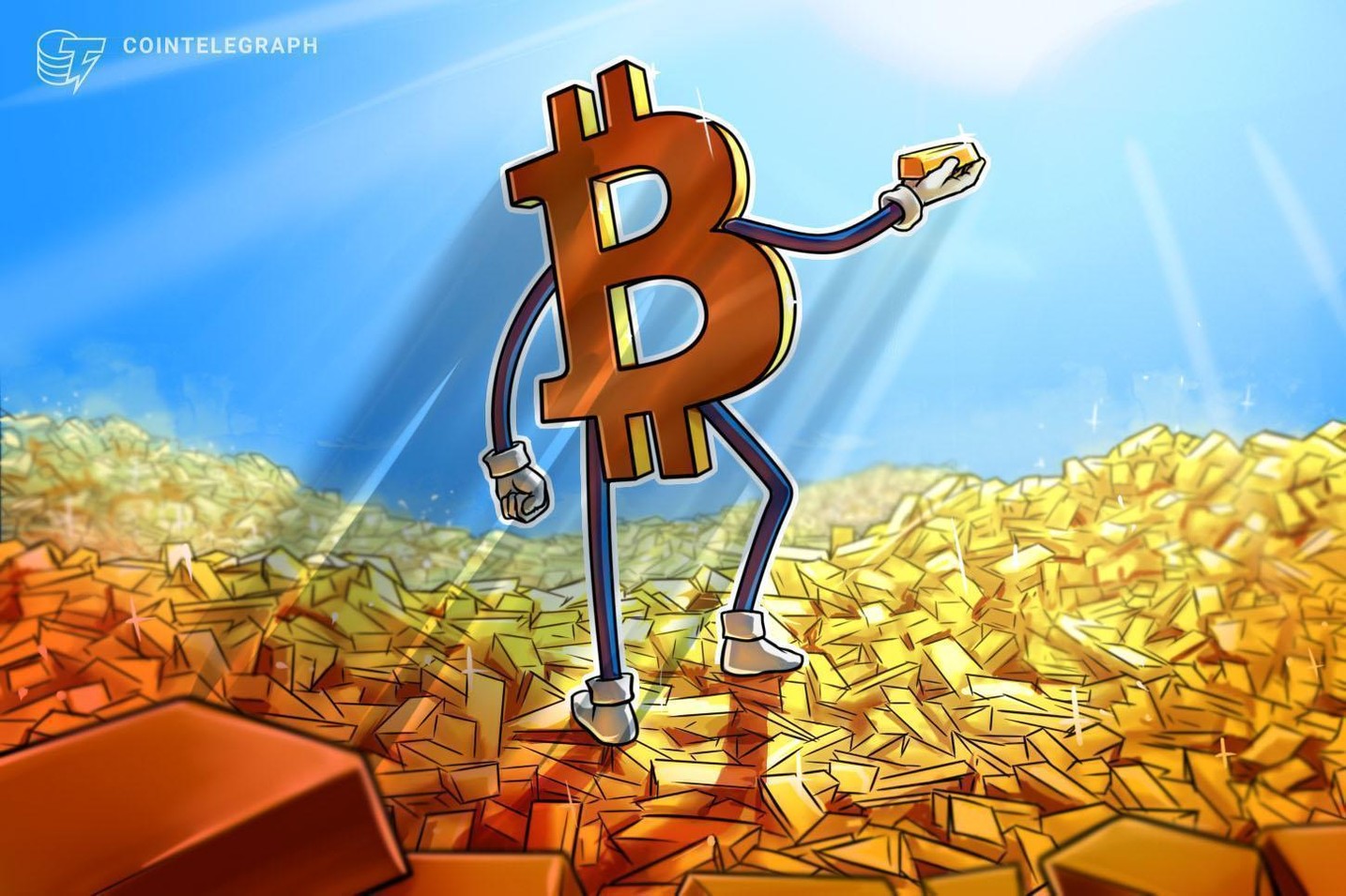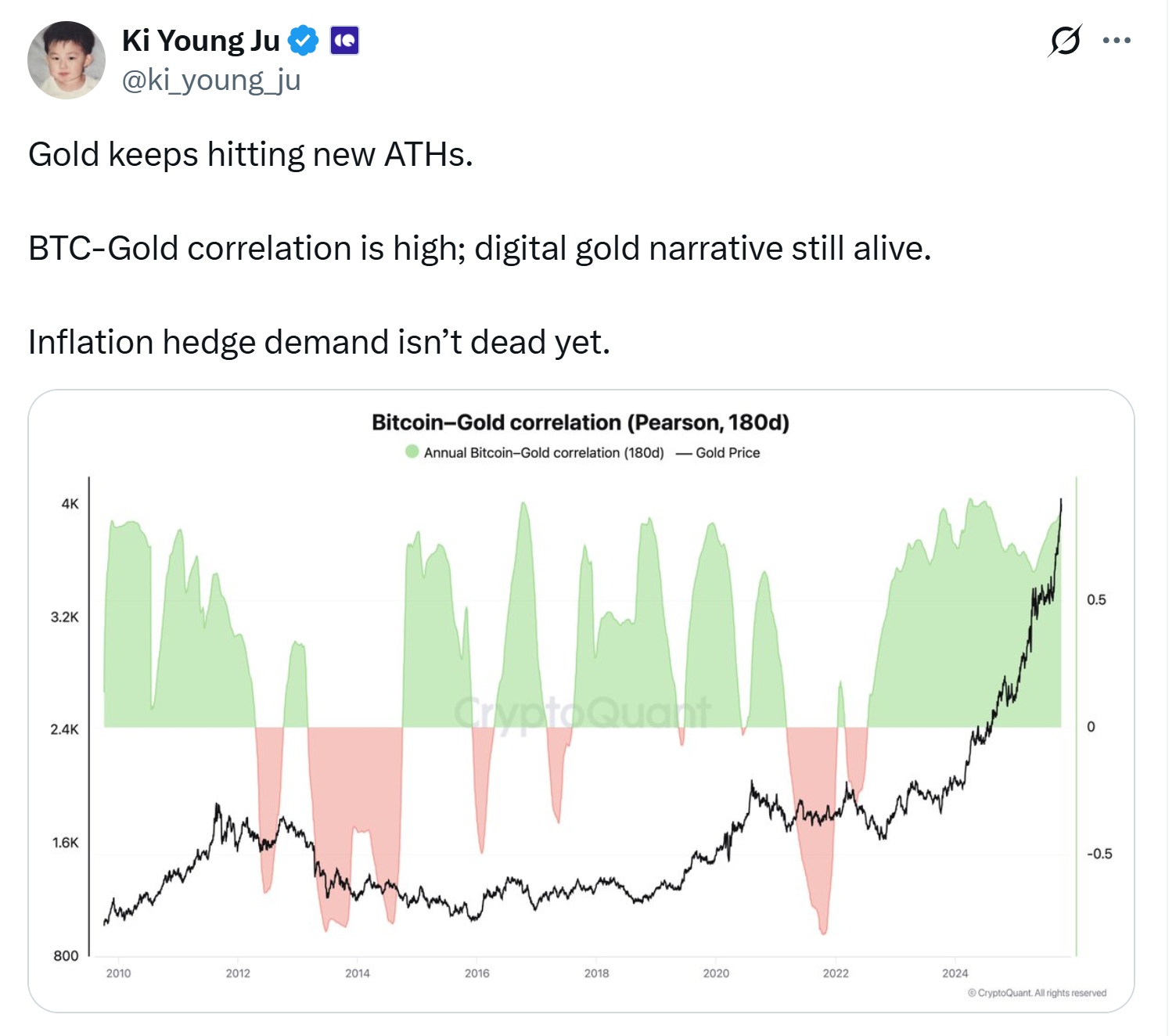
The Rising Correlation Between Bitcoin and Gold Amidst Economic Uncertainty
Bitcoin's correlation with gold surges above 0.85, as both assets become increasingly favored by investors amid inflation and global instability.
Bitcoin’s correlation with gold has climbed above 0.85, as both assets attract investors seeking stability amid inflation and global uncertainty.
Strengthening Correlation
CryptoQuant CEO Ki Young Ju noted that the correlation has risen sharply alongside gold’s surge to new all-time highs. In a post on X, Ju stated, “Gold keeps hitting new ATHs. BTC–gold correlation is high; digital gold narrative still alive. Inflation hedge demand isn’t dead yet.”
According to data from CryptoQuant, the BTC-gold correlation is up from -0.8 in October 2021. The correlation previously reached an all-time high of about 0.9 in April last year.
 BTC-gold correlation rises. Source: Ki Young Ju
BTC-gold correlation rises. Source: Ki Young Ju
Bitcoin’s Trajectory Mirroring Gold
According to Andrei Grachev, managing partner at DWF Labs, this correlation demonstrates how institutional investors view Bitcoin. He states, “Capital naturally rotates into assets perceived as stable stores of value.” Grachev highlights that Bitcoin is following a similar trajectory to gold, which transitioned from an actively used currency into a store of wealth.
Ben Elvidge, head of commercial applications at Trilitech, expressed that Bitcoin’s current utility is more as a store of value than a currency due to its programmatic scarcity. He stated, “This is because its capital appreciation potential has outweighed its ease of transfer for payments.”
Gold and Silver Reaching New Heights
On Tuesday, gold prices surged to an all-time high of $4,179.48 per ounce, with spot gold rising 0.5% to $4,128.49. Silver also reached a record high of $53.60 before easing to $52.27, with gains exceeding 85% this year, outperforming gold.
The rising gold and silver prices are attributed to financial institutions increasingly engaging in the “debasement trade.” As Anthony Pompliano mentioned, institutions are recognizing that “no one is ever going to stop printing money,” thus fueling demand for hard assets.


